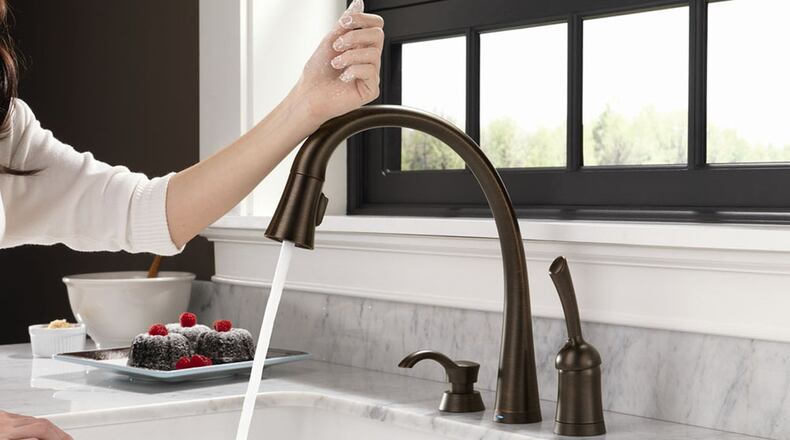“It’s something that every water and sewer authority in the state, in the U.S. needs to be mindful of, and we are,” he said. “It’s not unique to us, and we’re doing everything we can to optimize our operation knowing that our customer base is not really growing, and in fact our sales are declining slightly over time.”
FAIRFIELD NEWS: How Fairfield has helped improve the world’s water quality for 25 years
But for a water utility like Butler County, which services fast-growing communities like West Chester, Fairfield and Liberty townships, it’s not as much of an issue.
“We’re not building a lot of new homes, we’re not building a lot of new neighborhoods,” Sackenheim said. “Basically, our customer base is static.”
Butler County Water and Sewer Department Director Martha Shelby said her district has also experienced decreases in residential water usage, though revenues have trended up.
“The decrease in usage per customer has historically been more than offset by the growth in our service area,” Shelby said. “We also see usage fluctuations from year-to-year due to weather conditions being relatively wet or dry.”
Thousands of single-family new home permits have been issued in Butler County over the past several years, including more than 1,200 in 2017 and 2018, according to the Home Builders Association of Greater Cincinnati.
While a decrease in water usage could result in a rate hike, Sackenheim said the city is first looking at operations costs before considering such a move. Back-end operation improvements installing energy-efficient controls, pumps and electrical systems, and streamline plant operations.
Sackenheim, as well as Shelby, believes the reduction in water use is caused by a combination of things: high-efficiency appliances, low-flow fixtures and water conservation.
“I think the biggest factor is the appliances,” said Sackenheim, adding people are “pretty much limited” to high-efficiency appliances and low-flow fixtures. “That’s what’s available to people and that’s what people are buying.”
He also believes residents “are being more environmentally aware.”
“A decade ago or 20 years ago they would water their lawns more often, or not be worried so much about a leaky toilet. Now they think twice about watering their lawn, or letting a facet drip or a toilet run for weeks on end,” Sackenheim said. “We want our residents to be conservation-minded, we don’t want our customers to be wasteful, but in terms of revenue, you’re using less so that’s less revenue coming into the the city utility department.”
The city expects to end 2019 with a $3.1 million cash balance in its water revenue fund. However, that fund’s ending cash balance is projected to decrease annually through 2023, by which time forecasts project a cash balance of less than $354,000.
Where the city is losing in residential usage, commercial and industrial usage has made up for about half that loss, Sackenheim said. Commercial and industrial businesses have increased its water usage from 400 million gallons of water a year in 2010 to around 490 million gallons in 2018.
“We have seen an increase in our commercial water sales,” said Sackenheim. “We’re seeing industrial growth and commercial growth.”
Part of the reason Fairfield has seen an increase in commercial and industrial water usage is because of the "massive growth" by Koch Foods on Port Union Road, said Fairfield Economic Development Manager Alex Kraemer. Over the past 10 years, the chicken processor grew from about 450 employees to 1,250, and invested millions of dollars, he said.
“Between building expansions, including three new production lines, and the cost of new equipment, Koch Foods has invested over $50 million in its Fairfield facility over the past 10 years,” Kraemer said.
Other businesses that have expanded over the past decade include Pacific Manufacturing and Takumi Stamping. Recent Fairfield business expansion projects include Rolled Alloys, Calvary Industries and The Fischer Group.
“Just the growth that we’ve seen with expansion from other companies just adds on to their (water) usage,” he said.
The city of Middletown does anticipate 2019 water revenue figures remaining around the same level as 2018, said Jacob Burton, the city’s finance director. Residential water usage has been flat, but commercial and industrial usage has spiked mainly because of the $600 million NTE Energy’s Middletown Energy Center project.
But Middletown City Manager Doug Adkins said the city will expand its residential base by more than 270 homes in the next few months in Sawyers Mill. In 2020, Middletown’s Oakland neighborhood redevelopment project will renovate vacant homes and add new homes.
FACTS & FIGURES
• Fairfield has approximately 12,500 residential customers, which about the same in 2010
• Fairfield residential customers used roughly 750 million gallons of water in 2010, but used 600 million gallons in 2018
• Fairfield has approxicmately 10,000 commercial customers, which is about the same in 2010
• Fairfield industrial and commercial businesses used roughly 400 million gallons of water in 2010, and that’s increased to 490 million in 2018
Source: City of Fairfield
About the Author

